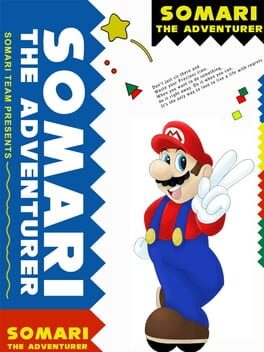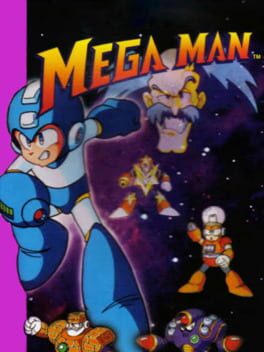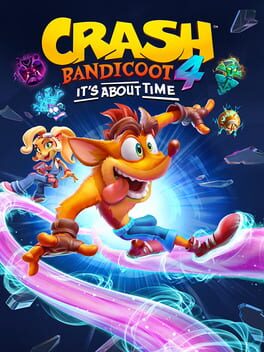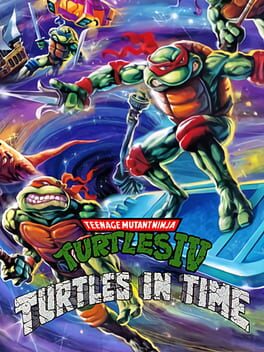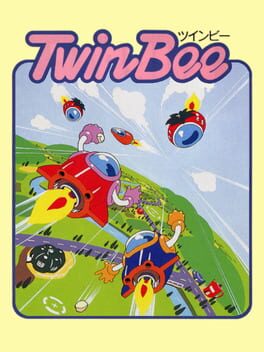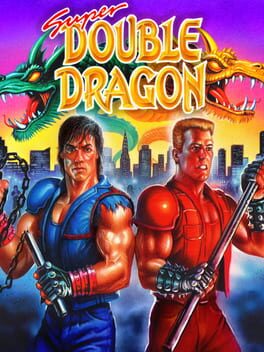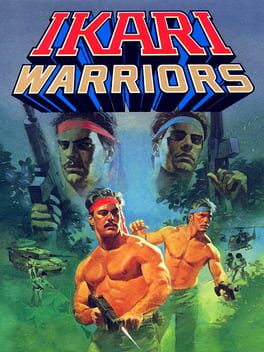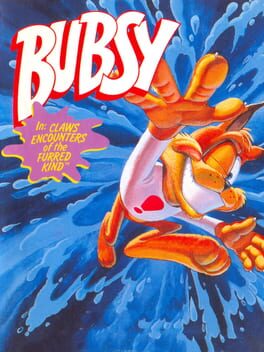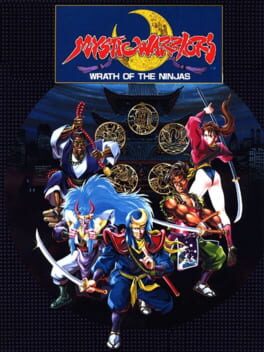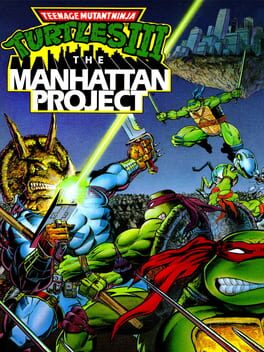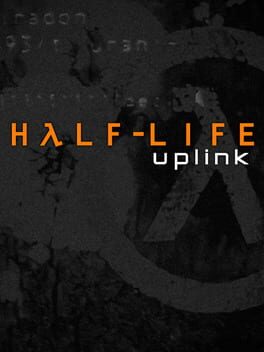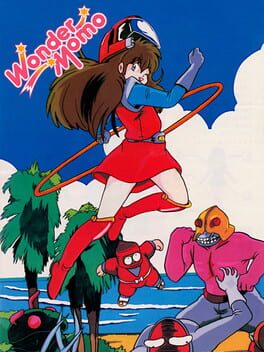Bottle
1992
Sometimes I think its necessary to experience the real trash to truly appreciate the best of the genre. Unfortunately that would mean telling people to play Rival Turf, a game so poorly put together that it can't even get the fundamentals right. The fighting is bad, the levels are bland, not even the music is any good. I'm aware there are worse beat em' ups out there but this isnt even funny bad, just boring. Play literally anything else I'm begging you.
1994
1995
1985
Humble beginnings, the Xevious inspiration is clear but there are enough unique qualities here to set it apart. You're probably not going to pick this as your go-to unless you're an oldie but its cute, colourful, and simple mechanics make this an easy game to recommend for those interested in retro gaming.
1992
The original Double Dragon is arguably one of the most historically important beat 'em ups ever made, being an important step in-between titles such as Renegade and Final Fight. The lack of any standard for what constituted a beat 'em up would give the series freedom to experiment, and as such each subsequent release tried something different. Awkward platforming, experience systems or even micro-transactions, The Double Dragon series was often one of change, for better or worse.
However, by the time Super Double Dragon released in 1992, we already had titles such as Final Fight and Streets of Rage solidifying the conventions of the genre; Super Double Dragon by comparison, plays rough even when compared to the NES originals. The game feels slow, hits are at times unresponsive, enemies and bosses move strangely and are very, very dumb often walking straight into your attacks after getting knocked down. You don't even get a in-game story until after you beat the final boss, it all just feels unfinished. Double Dragon 2, which was released in 1988 felt more ambitious than this game, with more varied locations, enemies and cutscenes. It's an improvement over the misstep that was Double Dragon 3 for sure, and the counter system is unique, if clunky in practice. I've played worse, but Super Double Dragon is just sad, and a clear example of just how fast the industry was moving during the early 90s.
However, by the time Super Double Dragon released in 1992, we already had titles such as Final Fight and Streets of Rage solidifying the conventions of the genre; Super Double Dragon by comparison, plays rough even when compared to the NES originals. The game feels slow, hits are at times unresponsive, enemies and bosses move strangely and are very, very dumb often walking straight into your attacks after getting knocked down. You don't even get a in-game story until after you beat the final boss, it all just feels unfinished. Double Dragon 2, which was released in 1988 felt more ambitious than this game, with more varied locations, enemies and cutscenes. It's an improvement over the misstep that was Double Dragon 3 for sure, and the counter system is unique, if clunky in practice. I've played worse, but Super Double Dragon is just sad, and a clear example of just how fast the industry was moving during the early 90s.
1986
Bubsy the character, is emblematic of 90s animal mascots. He's got the "hip" personality, "radical" abilities, and a suspicious lack of pants. There are probably several warrants out for his arrest.
Bubsy the game, is somehow even worse as it takes every bad 90s platformer trope and pushes them into the stratosphere. The game is absolutely vile, and I wouldn't recommend it to anybody, not even those who enjoy the taste of trash. At least Awesome Possum had a message, this is just manufactured, corporate garbage.
Bubsy the game, is somehow even worse as it takes every bad 90s platformer trope and pushes them into the stratosphere. The game is absolutely vile, and I wouldn't recommend it to anybody, not even those who enjoy the taste of trash. At least Awesome Possum had a message, this is just manufactured, corporate garbage.
I'm not sure if this is as good as Sunset Riders but it's just as high-energy. It's a fast-paced run-n'-gun platformer switching set pieces at an exhilarating rate complimented by a soundtrack capturing that 90s club trance at its peak. The female Ninja also doesn't wear pants, maybe it's more aerodynamic that way?
A much better attempt at a TMNT beat-em-up, but just like the previous NES game it drags on a bit too long, with not enough going on to justify it. There's no reason the stages had to be this basic, but at least the fighting feels better with actual hitstop on the enemies this time (for the most part).
Getting the game looking this good on the Mega Drive must've been actual witchcraft, especially when its this smooth. Unfortunately despite this visual flourish the gameplay is not as polished as you'd hope, especially coming off other SEGA Disney games like Castle of Illusion. You get hit from off-screen more than you'd like and collision detection can be pretty iffy to put it lightly. It's real rough around the edges but it sure is pretty to look at, its at least worth a save state play-through just to look at the pretty visuals.
1999
Honestly a shame that it took this long for Uplink to be readily accessible on Steam. This 20-minute slice perfectly encapsulates everything good (and bad!) about the original Half-Life, but as a kid who dug through Cuttng Room Floor pages looking at all the unused content (Hello, Mr. Friendly), I'm just happy that this is readily accessible to more people. By 1999 you didn't have to "sell" Half-Life to people anymore, so its even crazier this goes as hard as it does. Now give us that E3 Half-Life 2 tech demo so I can be like those guys who oogled at the barrel physics.
1987
A pretty blatant effort to market a pretty bishoujo heroine with a so-so game, I can see why this took so many years to see an international release.
Unfortunately Wonder Momo is a repetitive, clunky "kill the enemies to fill the power meter, transform, (hopefully) beat the boss and then repeat for 16 levels" type of game. Think Altered Beast but on a single screen rather than a repeating level layout. It appears simple at first but enemies swarm you, and Momo never feels as responsive as you'd like her to be. Even for the era there are other arcade games that do the bishoujo action lead better (Athena released the year earlier and Psycho Soldier would come out a week after Momo's debut).
It all makes sense when you consider Japan's growing fascination with idol culture starting to really solidify itself as a pop-culture movement when this released. Momo really did fit all the criteria for what was appealing to Japanese youth at the time, and she clearly took a hold of a subset as Wonder Momo still appears as a recognizable face of Namco's Japanese arcade history. I just wish it was attached to a game I'd actually want to replay.
Unfortunately Wonder Momo is a repetitive, clunky "kill the enemies to fill the power meter, transform, (hopefully) beat the boss and then repeat for 16 levels" type of game. Think Altered Beast but on a single screen rather than a repeating level layout. It appears simple at first but enemies swarm you, and Momo never feels as responsive as you'd like her to be. Even for the era there are other arcade games that do the bishoujo action lead better (Athena released the year earlier and Psycho Soldier would come out a week after Momo's debut).
It all makes sense when you consider Japan's growing fascination with idol culture starting to really solidify itself as a pop-culture movement when this released. Momo really did fit all the criteria for what was appealing to Japanese youth at the time, and she clearly took a hold of a subset as Wonder Momo still appears as a recognizable face of Namco's Japanese arcade history. I just wish it was attached to a game I'd actually want to replay.

